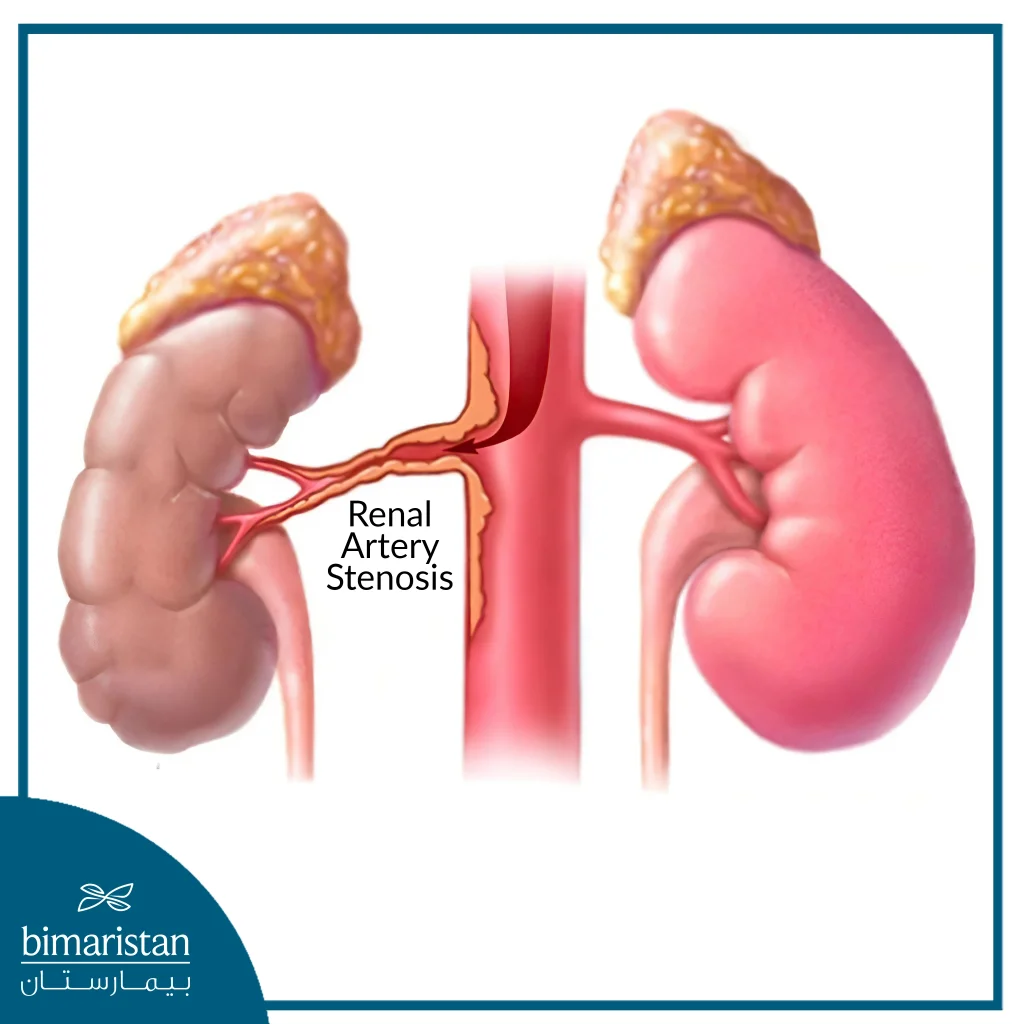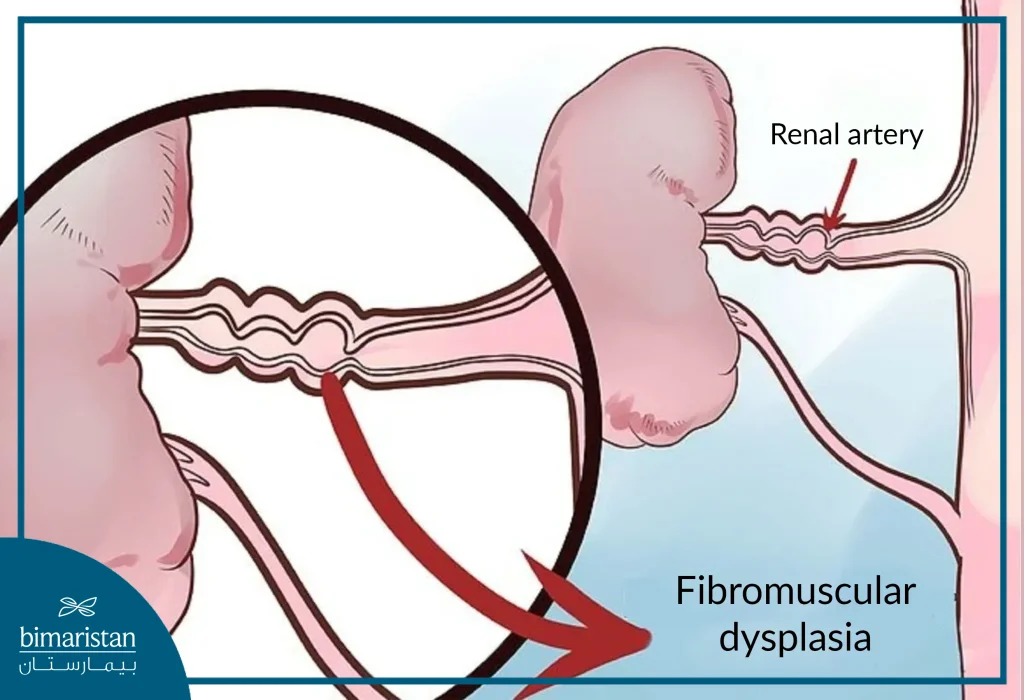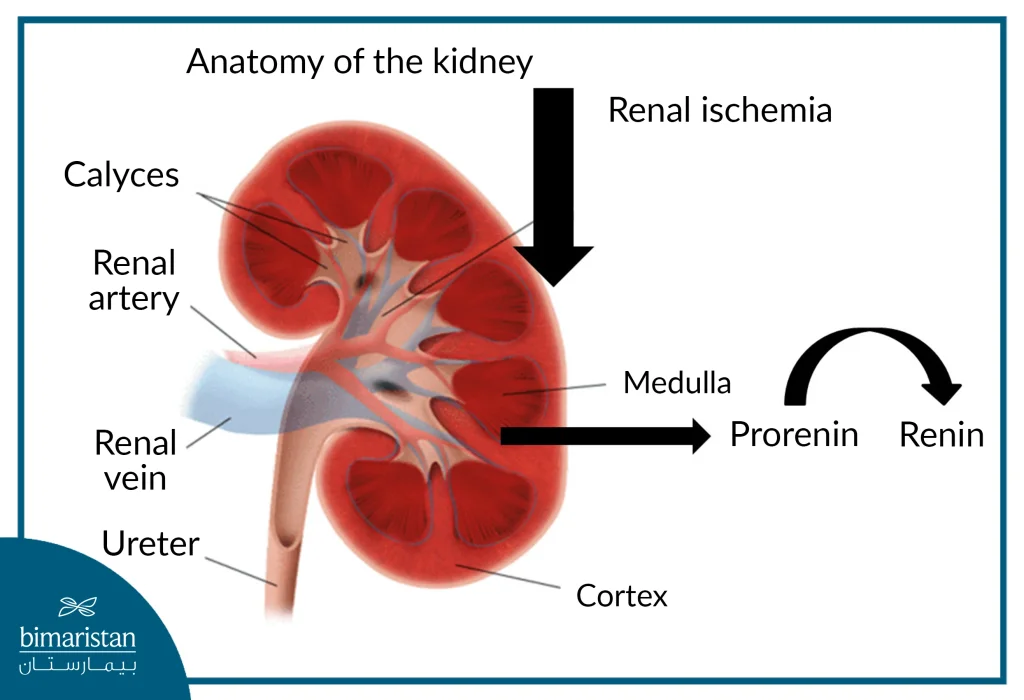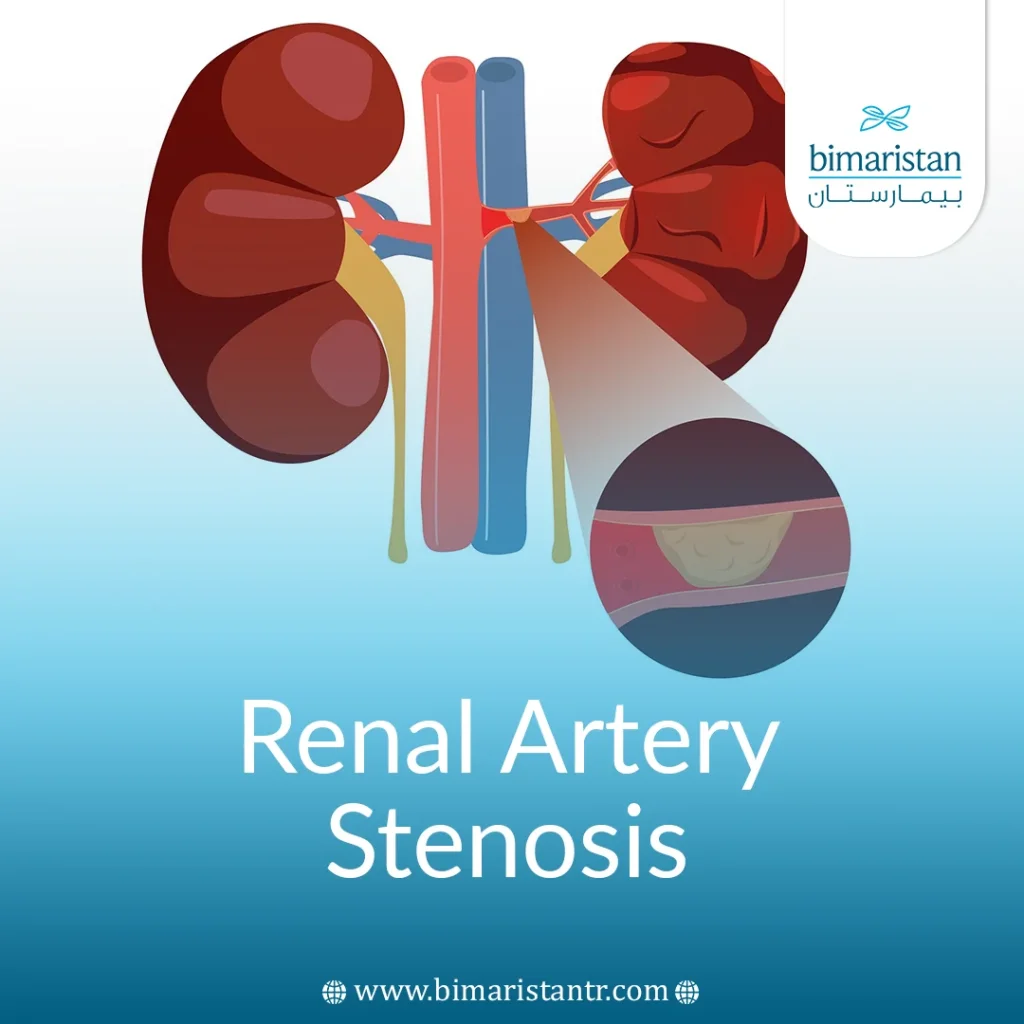Renal artery stenosis is the narrowing of the artery supplying the kidneys, which leads to secondary hypertension and can be treated in Turkey before it is too late, either by catheterization or surgery.
What is renal artery stenosis?
Renal artery stenosis is the narrowing of the artery supplying the kidneys either on one or both sides (i.e., in the artery of one or both kidneys).
In 80% of cases, the stenosis occurs due to atherosclerosis of the arteries, the main artery (aorta) and the artery branching from it (renal).
As a result, high blood pressure caused by the activation of the renin-angiotensin-aldosterone system can develop.
Therefore, renal artery stenosis is often accompanied by high blood pressure.
This also affects most elderly smokers. Also, 20% of patients suffer from congenital renal artery stenosis (especially women).
In this case, the narrowing of the renal arteries occurs due to the muscles of the blood vessel wall and the connective tissue structure of the blood vessel.
Types of Renal Artery Stenosis
Atherosclerotic Renal Artery Stenosis
Renal artery stenosis is caused by atherosclerosis and is more common in older adults.

Fibromuscular renal artery stenosis
In this form of the disease, the wall of the blood vessel of the renal artery thickens, thus narrowing the opening of the blood vessel. This form mainly affects young people.
In 1% to 5% of cases, the stenosis causes high blood pressure.

Causes of Renal Artery Stenosis
Atherosclerosis
The most common cause accounting for 60% to 90% of cases.
It occurs mainly at the junction between the aorta and the renal arteries.
Fibromuscular dysplasia
This is a change in the vascular connective tissue.
This condition of renal artery stenosis is more common in young patients and most likely occurs in the middle third of the renal artery.
Arterial inflammation
Such as Takayasu’s arteritis (nonspecific aortic inflammation).
Other rare causes
Such as trauma, renal artery aneurysm, or thrombosis.
The Goldblatt effect can explain the pathophysiology of the stenosis. If the diameter of the renal artery is reduced to less than 40 percent, blood flow to the kidney is reduced.
The kidneys react to the decreased blood flow by increasing the release of renin, which, via the renin-angiotensin-aldosterone system, causes vasoconstriction (vasoconstriction) and increased absorption of sodium and water.
This results in an increase in systemic blood pressure.
In this way, the diseased kidneys try to improve the restricted blood flow, but they also increase the pressure in the body’s circulation to values considered pathological.
Symptoms of renal artery stenosis
The disease does not always have symptoms but can remain asymptomatic.
However, vascular hypertension occurs in many cases.
This is high blood pressure caused by kidney disease. In addition, blood flow to the kidneys decreases, which can lead to kidney failure.

In general, possible symptoms include:
- High blood pressure (especially diastolic blood pressure)
- Lack of biological clock influence on vital processes (i.e., it does not coincide with the day-night cycle)
- A stenosis sound in the navel area (in about 40 percent of patients)
- In advanced stages of the disease, high blood pressure values often develop rapidly
Diagnosis of renal artery stenosis
In thin people, stenosis can be observed with a stethoscope.
During physical examination, flow noises are heard in the abdomen and waist area, indicating changes in the blood vessels of the kidneys.
Diagnosis of vascular changes is mainly made by ultrasound examination of the kidneys and blood vessels.
During the examination, the blood flow rate through the vessels and the width of the blood vessel can be measured.
Treatment is necessary if a significant constriction with a low flow velocity can be detected.
The ultrasound examination does not use X-rays, which is why it is particularly convenient for the patient.
Another option is the so-called magnetic resonance angiography, in which the renal vessels are shown precisely.
Here, the patient is injected with a contrast medium through the vein, which makes the renal vessels clearly visible.
Treatment of renal artery stenosis
The following treatment options are available:
Medication treatment
ACE inhibitors are used with beta blockers as a medication. However, when drug therapy fails and when there is no improvement in blood pressure values, surgical procedures become an option.
In the case of renal artery stenosis in both kidneys or in the case of a single kidney, treatment with ACE inhibitors can lead to acute renal failure and is not recommended in this case.
Interventional treatment – percutaneous transluminal angioplasty (PTA)
Percutaneous transluminal angioplasty (PTA) is successful in 80% of cases of renal artery stenosis, often with a temporary tube implanted later. As with cardiac catheterization, a balloon is pushed into the renal artery via a catheter. This balloon is then expanded at the site of the defect to widen the vessel.
If necessary, a temporary tube can be used inside the blood vessel to ensure that it remains open.
PTA is only performed if drug treatment for high blood pressure does not lead to a sufficient reduction in pressure or if the artery is more than 70% blocked and, therefore, no improvement in high blood pressure is expected.
Surgical treatment – aortic aneurysm surgery or anatomical bypass surgery
Surgery may be necessary in rare cases, for example, if catheter treatment is unsuccessful.
During surgery, the narrowed part of the blood vessel is removed and, if necessary, connected to an artificial vascular end.
Renal artery stenosis prognosis
The cause of this stenosis can usually be corrected.
In most cases, a normal blood pressure level can be achieved.
However, the longer the stenosis is left untreated and the higher the blood pressure, the less likely it is to be lowered again as the body adapts to the high blood pressure over time.
If high blood pressure persists, so-called persistent high blood pressure occurs.
In addition, if renal artery stenosis is not treated, there is a risk of kidney shrinkage and gradual loss of function.
The unaffected kidney can then enlarge.
You can contact us to learn about the latest treatment methods in Turkey.
Sources:

